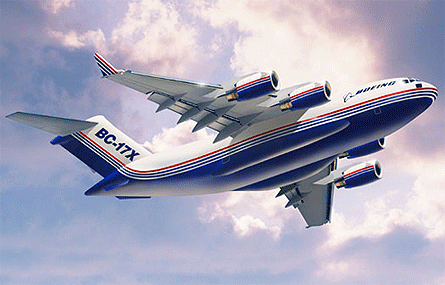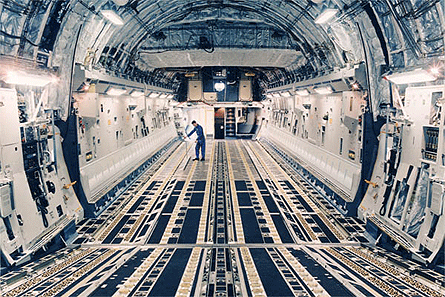Boeing claims it is closer than ever to launching the long-awaited BC-17 commercial derivative of its C-17 strategic transport, but says the growing gap in guaranteed production beyond delivery of the final contracted aircraft in 2009 makes this, and any further potential study derivatives, increasingly expensive to develop.
“We have several customers with money that have given us requests for proposals,” says C-17 vice president and programme manager Dave Bowman, who adds: “I’ve never received RFPs before.”
Although the company declines to identify the interested groups, Bowman says “this is the closest we’ve ever been to launching this programme, and we have got actual proposals in hand from customers.
“We’re looking forward to launching the programme, which could initially be for between 30 and 60 aircraft,” says Bowman, who adds the potential market “could be upwards of 100 aircraft.”

Boeing has discussed the commercial variant for around a decade, formerly as the MD-17 prior to its merger with McDonnell Douglas, but has never previously found a sufficiently large customer base to warrant its go-ahead.
Groups such as Global Heavylift Holdings, a private concern which is attempting to raise $10.8 billion in equity to buy 30 new C/BC-17s, have publicly announced their intention to secure the launch of the commercial version.
The group, led by Myron Stokes, is also calling for the aircraft to be granted an exemption from the FAA’s FAR21.27 rules, which would enable it to be more easily ‘civilianised’.
Global says it intends to raise the required equity during the second quarter of 2007 through a consortium of banks and “other financial institutions.”
However, Bowman warns that since C-17 long-lead items were issued with a stop work order in March, the current schedule calls for the last aircraft to deliver in August 2009. “We’re in gap mode right now, and the larger that gap the more expensive it will be to restart,” he says.

However, with additional military orders from the US Air Force and international customers, Bowman says BC-17 deliveries could take up the slack from 2010, further bridging the gap towards the possible development of a C-17B variant.
“If we have a production line taking us out long enough to around 2011, we can have it ready in 2012, which beats the [2015] entry-into-service timeframe for the US Army Future Combat System.”
Compared to an all-new aircraft costing “$15-20 billion”, Bowman says the modified C-17B could be developed for as little as $1.5-2 billion.”
To be equipped with a centre body gear to help it operate from semi-unprepared strips, the C-17B would have its maximum take-off weight increased from 265,000kg (585,000lb) to 279,000kg, while take-off distance would be reduced at gross weight from 7,040ft (2,150m) to around 6,880ft.
It would also feature upgraded, higher thrust Pratt & Whitney PW2000 engines, an engine-out compensation system, stability and augmentation system and advanced situational awareness and defensive systems countermeasures suite.
Source: FlightGlobal.com























